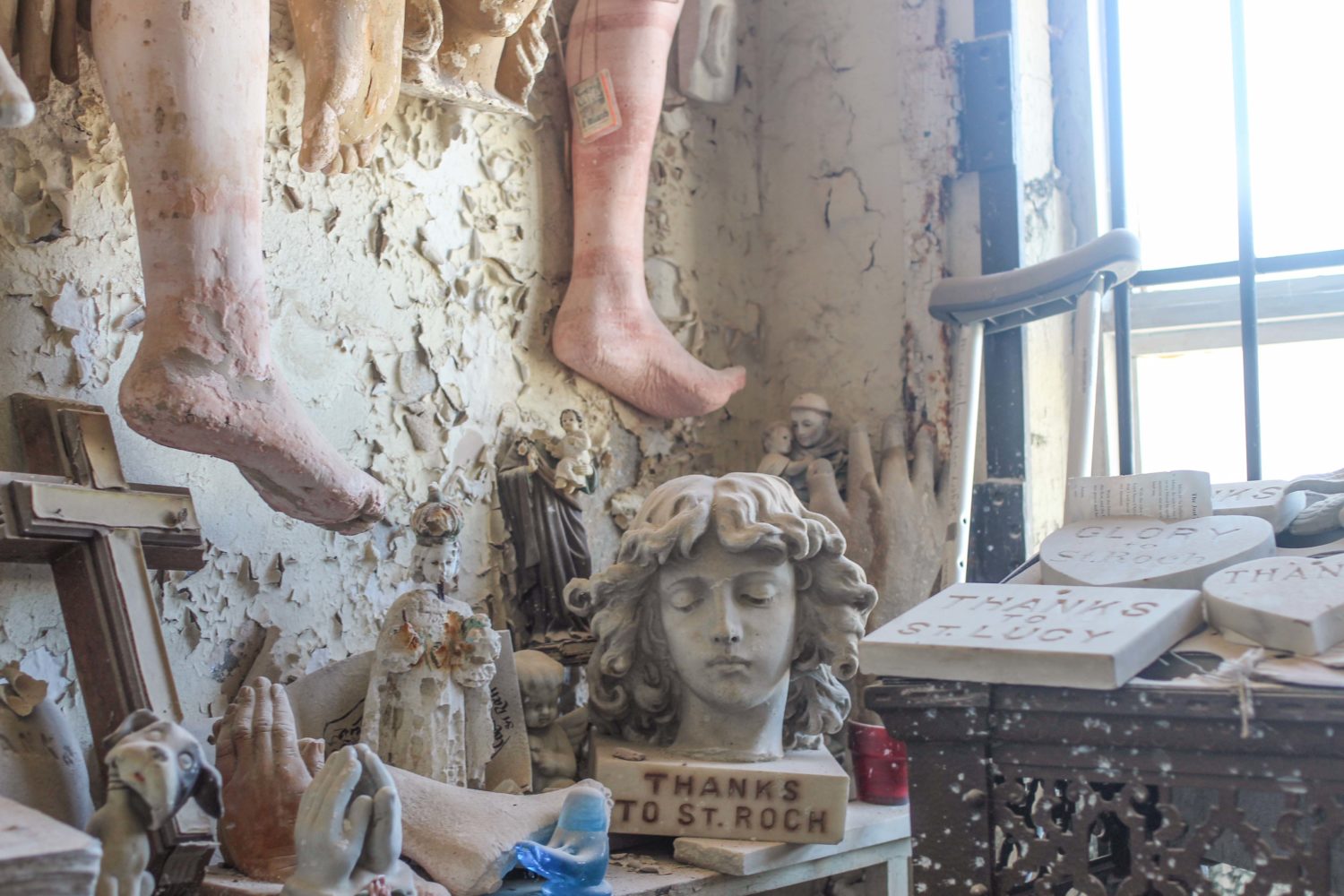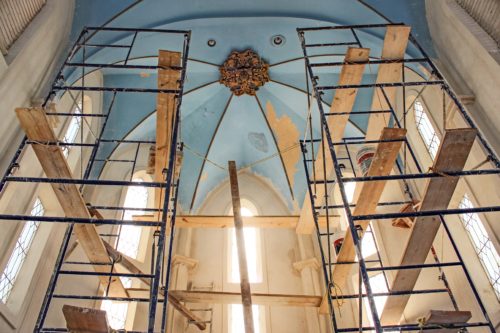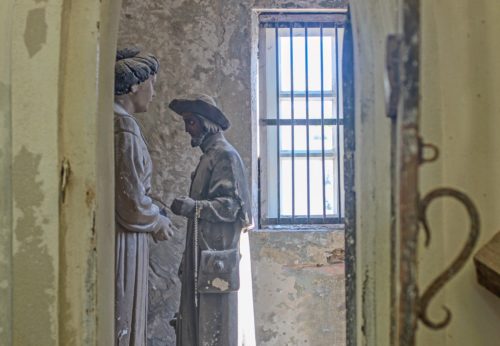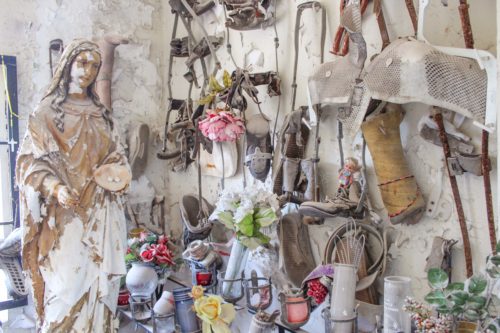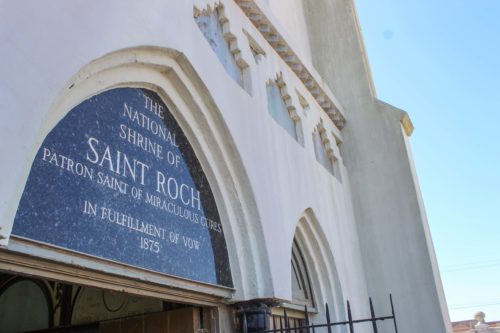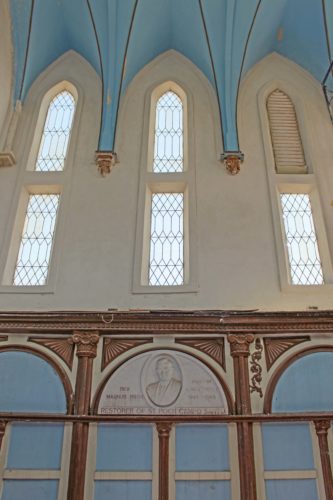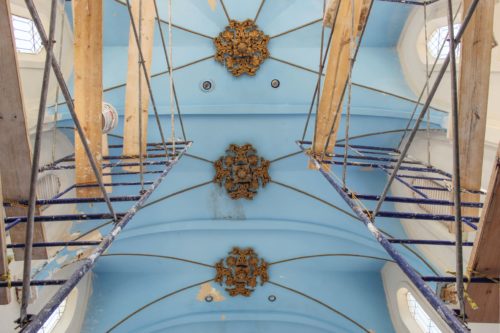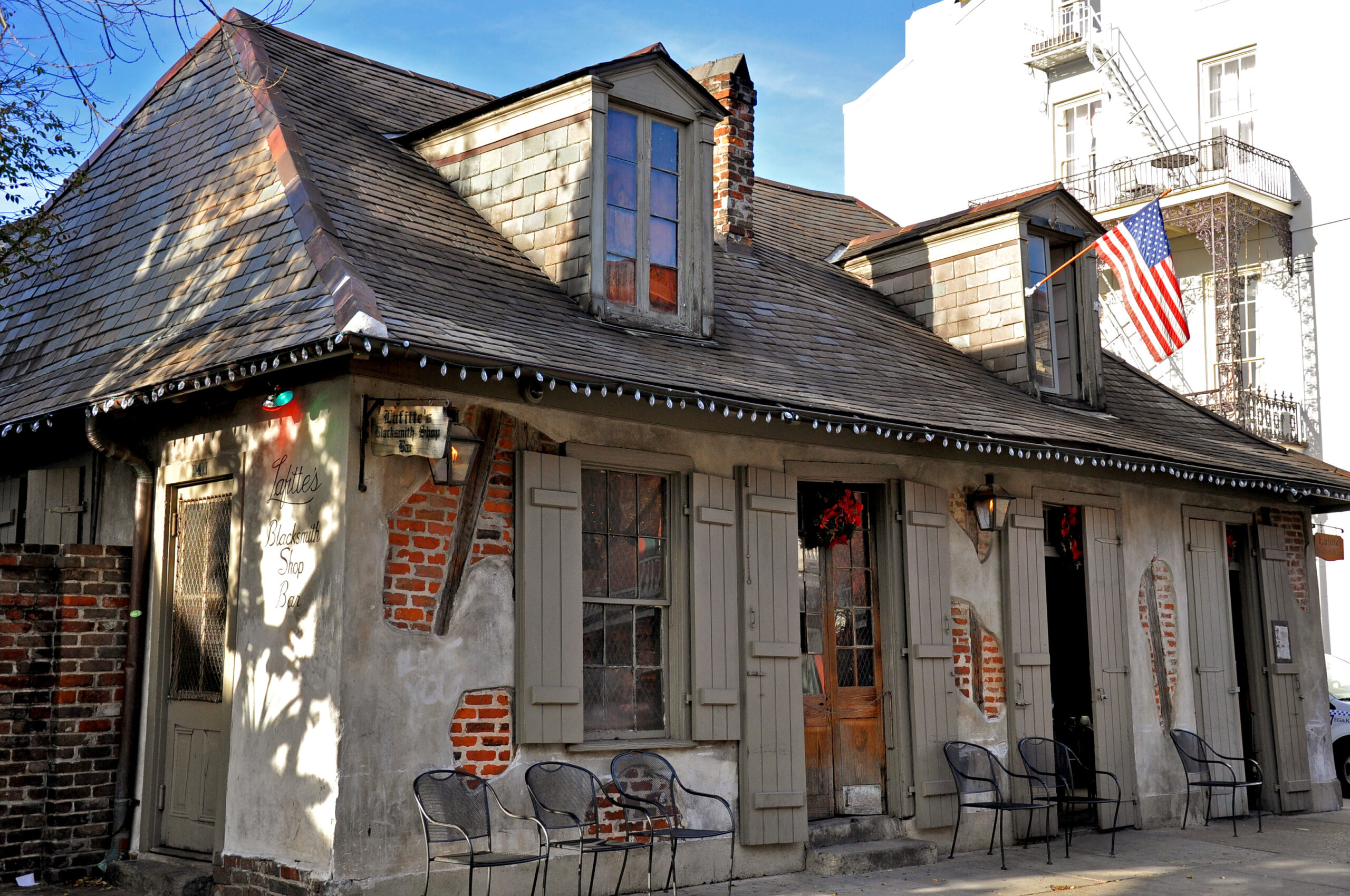This story appeared in the June issue of the PRC’s Preservation in Print magazine. Interested in getting more preservation stories like this delivered to your door each month? Become a member of the PRC for a subscription!
An ambitious, large-scale restoration of St. Roch Chapel is underway led by the New Orleans Catholic Cemeteries Office. The Gothic Revival-style chapel, which was dedicated in 1876, has been closed to visitors since September 2017 when severe structural issues were discovered.
Legend has it that in 1874 Rev. Peter Leonard Thevis, of Holy Trinity Church (today’s Marigny Opera House), purchased the property that would become St. Roch Cemetery (or “Campo Santo”) in gratitude for the intercession of St. Roch in protecting his congregation during the yellow fever epidemic of 1867. The mortuary chapel quickly gained a reputation as a place of healing and became a pilgrimage site for those in ill health and those seeking spiritual consolation.
The chapel originally was constructed out of “soft” clay brick coated with lime-based plaster. Over the years, in efforts to regulate water intrusion, layers of Portland cement and latex paint were added on top of the historic materials. Though it was not known at the time, the practice would lead to the deterioration of the original masonry by creating an impermeable surface from which moisture could not escape.
Photos by Liz Jurey
Last year, cemetery staff, looking for signs of termite damage, noticed an area of failing plaster behind the altar. The plaster was bulging away from the wall due to a layer of aluminum sheet metal put in place in 1958. This same sheeting was subsequently found throughout the chapel.
“Once we got the sheet metal off, we were hoping to find lime-based plaster,” said Joseph Conner, the Cemeteries Office’s assistant director of operations, who is overseeing the project. Instead, they found “Portland cement covering over the lime plaster and clay bricks, which in some areas was up to 2 inches thick,” Conner said.
After discovering the issues, the Cemeteries Office decided to invest in restoring the chapel to its original condition. If left untreated, the deterioration would have worsened, and it would have been merely a matter of time before New Orleans lost this much beloved site.
German Sarmiento of VGR Construction Inc. is the lead contractor on the project. He is working with Conner and the Cemeteries Office staff who have received training and direction from Jimmy Price, a lime-based restoration expert and founder of Virginia Lime Works and Price Masonry Contractors.
After the team successfully removed the layers of Portland cement from the historic brick, the chapel was allowed to air out to lessen the moisture content in the masonry. During that process, the plaster of the ceiling, applied during a 1948 restoration, began to separate from the vaulting. Hydraulic jacks were used to stabilize the structure, and two brick columns, matching in style to those found elsewhere in the chapel, were constructed behind the altar to add structural support.
The team now has applied lime-based plaster to the walls of the main space and installed new electrical wiring. Ornamental details, such as corbels that had been damaged beyond repair, are being replicated. However, a long work list remains, and the Cemeteries Office is counting on donations to help offset the cost.
“Taking on a major restoration project is no easy feat, especially when it’s a historic chapel,” said Sherri Peppo, director of the Cemeteries Office. “I’m blessed to see the restoration take place and know that this chapel will remain as dedicated in 1876.”
The only interior space not being touched, located to the right of the altar, is the small room containing ex-votos for the intercession of St. Roch. The room had not suffered major damage, and so the Cemeteries Office has chosen to leave it undisturbed. The offerings left by generations of visitors will remain as a reminder of the sanctity of the site and the faith of those who value it.
The work is on schedule for completion in late fall of 2018.




